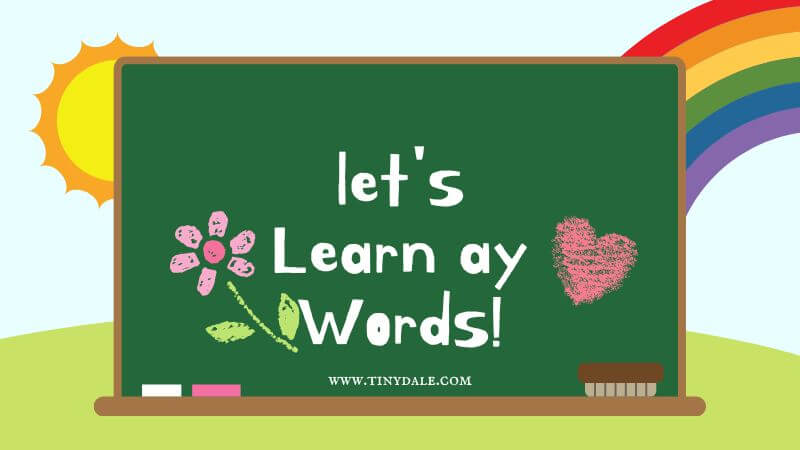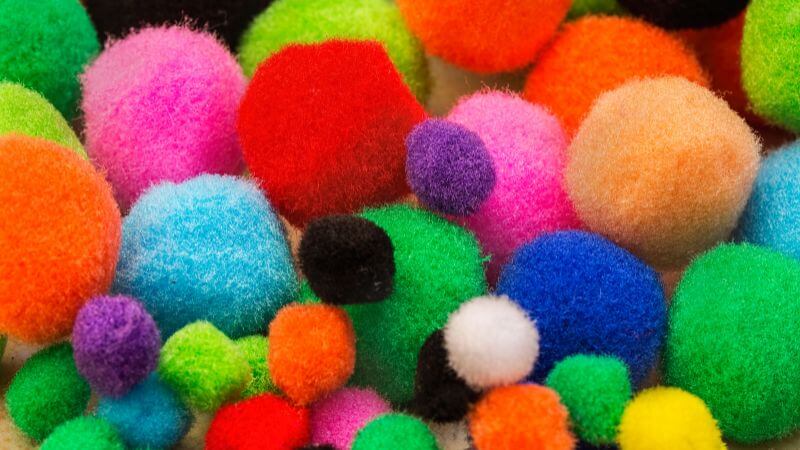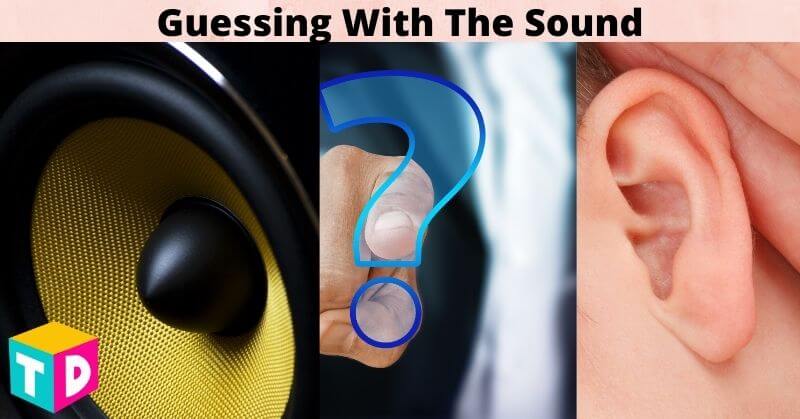You learn a variety of ay words every day.
If you have noticed, you must have come across many words that contain ‘ay’ in them.
You must have started learning different letter words from a young age.
Learning the different letter words is simple, but learning the particular phrases might be challenging.
If you are not familiar with all the words that contain the letter ay.
You can eliminate the ay words if you are familiar with all of the English terms.
And categorize them as per the letter contained.
Check the lists of terms supplied below after reading the article.
Why Does Spelling Matter?
While we think of spelling as something we memorize it’s more like learning formulas in math.
We don’t need to memorize individual words so much as to learn the rules and patterns that govern 90% of English words.
ay Words In English
Terms that begin with the letter ‘ay’ or that may contain the letter are ‘ay’ terms.
You must be familiar with the different letter words, but you must not give the list of terms containing “ay” any thought.
Words of three to fifteen letters may be included in the list.
Look through the lists of “ay” words below.
3 Letter ay Words
- Bay
- Day
- Fay
- Gay
- Hay
- Lay
- May
- Pay
- Say
- Ray
- Way
4 Letter ay Words
- Away
- Bray
- Clay
- Days
- Gray
- Lays
- Mayo
- Okay
- Play
- Slay
5 Letter ay Words
- Array
- Delay
- Decay
- Layer
- Maybe
- Mayor
- Relay
- Repay
- Spray
- Stray
Lesson Plan for ay Words
The weekly and daily lesson plans include within Phonics are simply a guide and ideas.
Long A Vowel Teams/Pairs learning anchors by The A-Team Cheerleaders Phonics Friends.
You may put them up on your board so that students can see them while you teach each day.
Students learn to remember the ay sound and how the two vowels combine to form the long sound by the A-Team pals.
When you introduce the pals and sound, turn it up.
During the daily ai/ay classes, word cards and phonemic awareness warm-ups are also an option.
By attaching the magnetic tape on the back, you may display the Word Cards on a whiteboard or an anchor chart.
The metal ring-mounted phonemic awareness cards can be hung on a board, easel, or other surface where your full group sessions will be conducted.
The Phonemic Awareness cards have a new theme every day.
The daily priorities are sound isolation, phoneme blending, segmentation, modification, and elimination.
Okay, let’s examine each day’s specific components one at a time.
Each day was broken by whole group, independent practice, word work, and home connection.
1. Pompom Sort – Activity to Learn ay Words
PomPom Sort is an independent follow-up activity to the pocket chart sound sort above.
By paying attention to where the ai/ay sound occurs inside the word, students complete the sort.
Then, according to where they hear the sound, they arrange the image onto the correct pompom.
Remind them about the mid-field/end zone sounds!
2. Puzzle Cards
Puzzle Cards are a Word Work activity. It is called “Make it Monday”.
To create the ay words, students collaborate with their station partner(s).
You can select the puzzle card version that works best for you from the 2 versions included in the resource.
3. Sound On The Field
Students split the word that is yelled out into the boxes in the guided practice exercise “Sounds on the Field.”
For each sound, they can use a manipulative (pompoms), or they can write the word in the boxes using a wipe-off pen.
4. Heads Or Tails – Learn ay Words
Heads or Tails is a partner game.
Each student has a turn tossing a coin to spell a word adjacent to an image.
For instance, A flips the coin and selects an image to spell once it lands on heads. B flips the coin then.
A will spell a word if he lands on heads; if he lands on tails, he will spell a word on his side.
5. Spin And Build – Learn ay Words
One home connection activity is Spin and Build.
Alternatively, if you don’t assign homework in your course, this might be done independently.
6. Table Races – Learn ay Words
Table Races were a staple in the classroom. This is a guided practice activity.
For this activity, the teacher yells out a word, and the kids use a wipe-off marker to write the word on their tables.
Students place their marks down when the teacher says, “TOUCHDOWN.”
The round wins and a table point is awarded to the first table to spell the word properly (and first)!
7. Roll And Color
In the solo activity “Roll and Colour,” students roll a die and look for a picture that matches what they rolled.
Then color the word that best describes the image.
8. Trace, Write And Match
Trace, Write, And Match is a home connection activity, but again this is an independent activity if needed.
9. Tic Tac Read
Tic-Tac-Read is a guided practice activity and is one of the very favorite phonics activities ever.
The game is played similarly to Tic-Tac-Toe, except that players cover the matching picture with their game piece after flipping over the word card. 3 in a row wins.
10. Smash And Match
A home connection activity is smash and match.
By breaking apart play dough, students hear out the word and match the picture to the word.
11. Touchdown – Learn ay Words
Touchdown is an interactive practice game that is so much fun to play. Each pupil receives a game card.
The music is turned on by the teacher while the pupils trade cards around the room.
While exchanging cards with another student, they are required to read the word on the card.
Whoever has the TOUCHDOWN card at the end of the song wins that round.
This is a perfect game for fluency and is more fun than reading words off a piece of paper to practice fluency.
Summary For ay Words
To sum up, these are some of the terms we like teaching children.
These practical exercises were designed to help my youngster learn this concept.
Please feel free to share your knowledge of digraphs and educational experiences.
In the comment section below, please share your thoughts on the learning that was just covered.
Tinydale is on YouTube, Click here to subscribe for the latest videos and updates.
Follow Us: Facebook | Instagram | Twitter | Youtube | Pinterest











